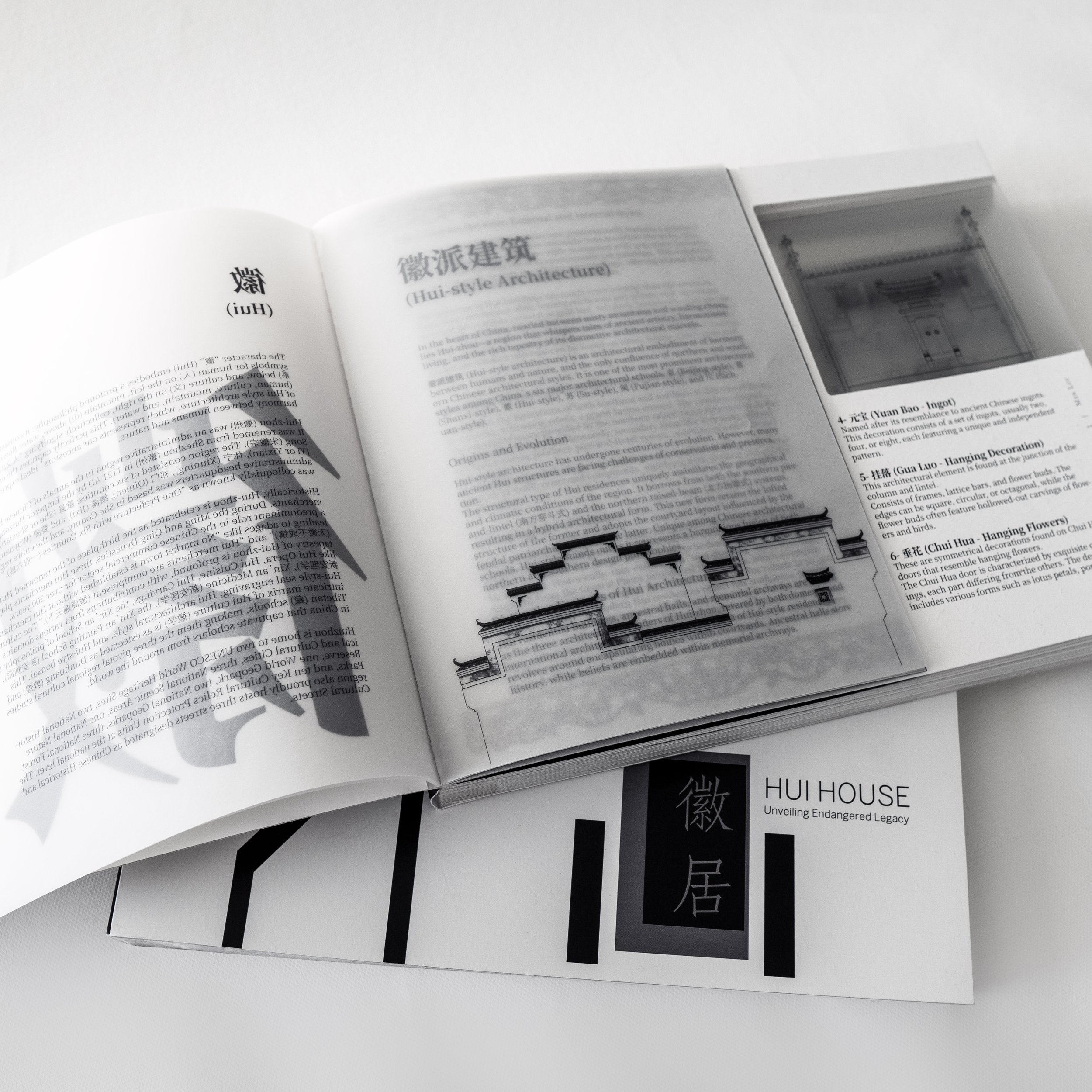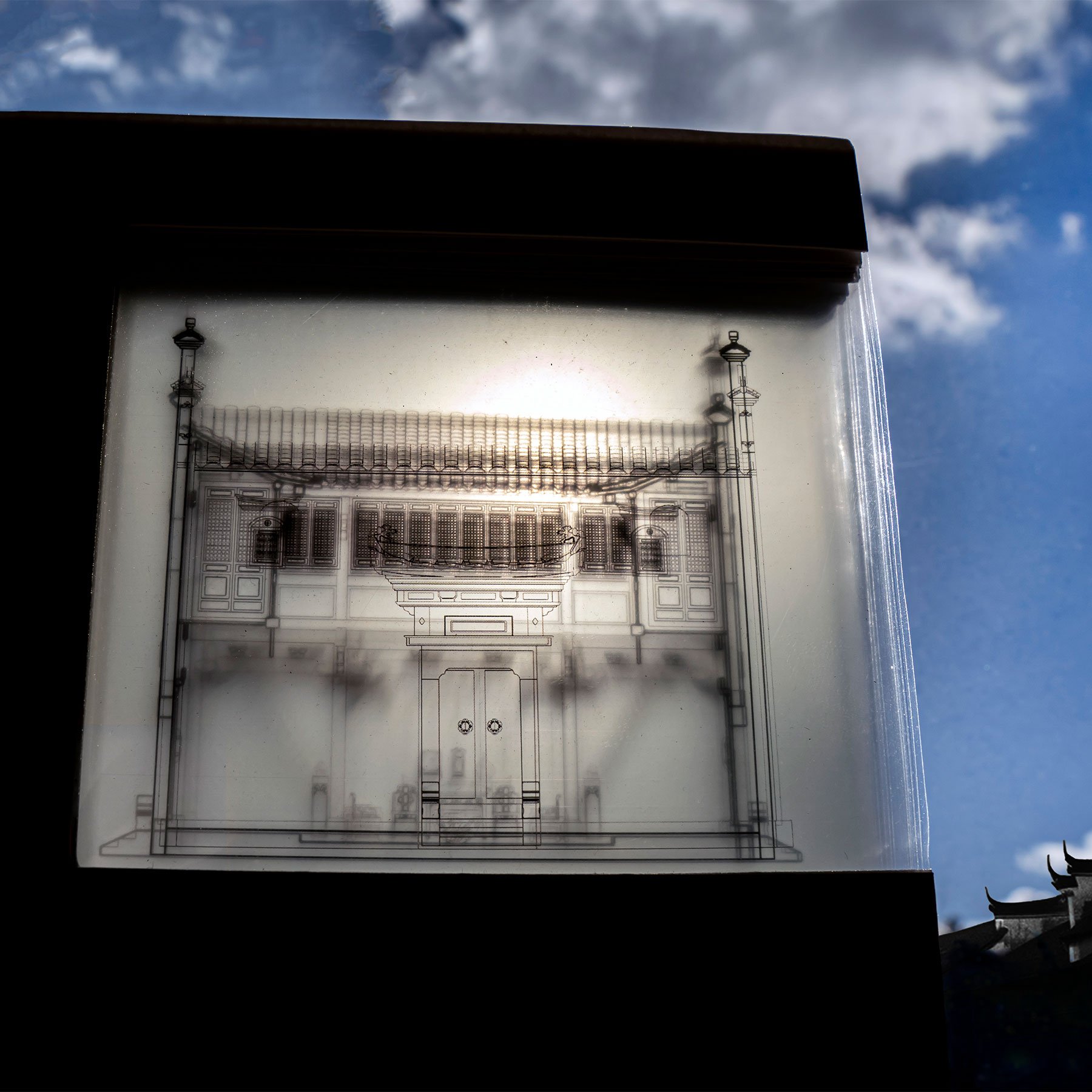
Hui House: Unveiling Endangered Legacy
a special limited-edition publication
This book depicts Hui-style architecture, the only Chinese architectural school that fuses southern lofted structures with northern courtyard layouts, a fading heritage, and a vital part of China's cultural tapestry.
Utilizing 3D slicing and acetate fiber printing, the "windows" of each page transform 2D views into a 3D Hui-style panorama, “unveiling” not only architectural details with spatial reference and proportionality, but also the research of Hui houses from the misty Huizhou region. It provides a tangible visual to advocate for preserving Hui-style residential architecture.
Art book
Heritage Preservation
Educational Tool
Architectural Exhibition
Hui-Style Architecture
3D Visual Print
International Association of Hui Art Studies
Cultural Heritage Advocacy
Architectural Archaeology
Art book Heritage Preservation Educational Tool Architectural Exhibition Hui-Style Architecture 3D Visual Print International Association of Hui Art Studies Cultural Heritage Advocacy Architectural Archaeology
RESEARCH ABSTRACT
Hui-style architecture is a focal part of Hui cultural heritage, as it embodies both the tangible heritage of habitats and the intangible heritage of construction techniques. Based on architectural analysis, the Hui style is China's sole architectural tradition that merges southern loft structures with northern courtyards, a fading heritage verifying the integration between the Central Plains civilization and the ancient Yue culture, an essential part of the Chinese cultural fabric.
RESEARCH CHALLENGE
Research indicates that Hui studies, as one of only three prominent local scholarly traditions in China, face risks due to its inland geographical and historical contexts.
Field research also shows that Hui architecture as a crucial cultural heritage is fading: Neglect, poor maintenance, and auctions are causing Hui architectural groups to vanish from the misty Huangshan and collective memory. Also, its construction skills, the core intangible cultural heritage, are nearing extinction.
PRODUCTION TECHNOLOGY
Through Historic Building Information Modeling (HBIM), including 3D scanning, texture capturing for patterns of wood, stone, and brick carvings of authentic ancient Huizhou residences, depth-layered 2D images are sliced from digital models, and printed onto acetate fiber papers to enhance the visual depth and clarity, forming interactive "windows" with proportions of Hui-style buildings, allowing for a dynamic exploration of architectural details and spatial relationships.
-
Deep exploration of Hui-style architecture's axial symmetry and sectional expansion, presented through stacked "windows" of depth-layered illustrations with spatial references, creating an immersive miniature Hui house for a 3D learning journey
-
An art book showcasing Hui-style architecture, an ancient and fading heritage in China, featuring pages that overlay to form a delicate 3D panorama, revealing architectural details and the misty landscape of Hui regional culture to a broader audience.
-
A see-through window from cover to back entices readers into Hui-style architecture. Iconic sections with narratives guide a self-paced tour, while layered pages reveal spatial relationships and perspectives, making ancient concepts accessible and fostering a deep engagement with Hui cultural heritage.
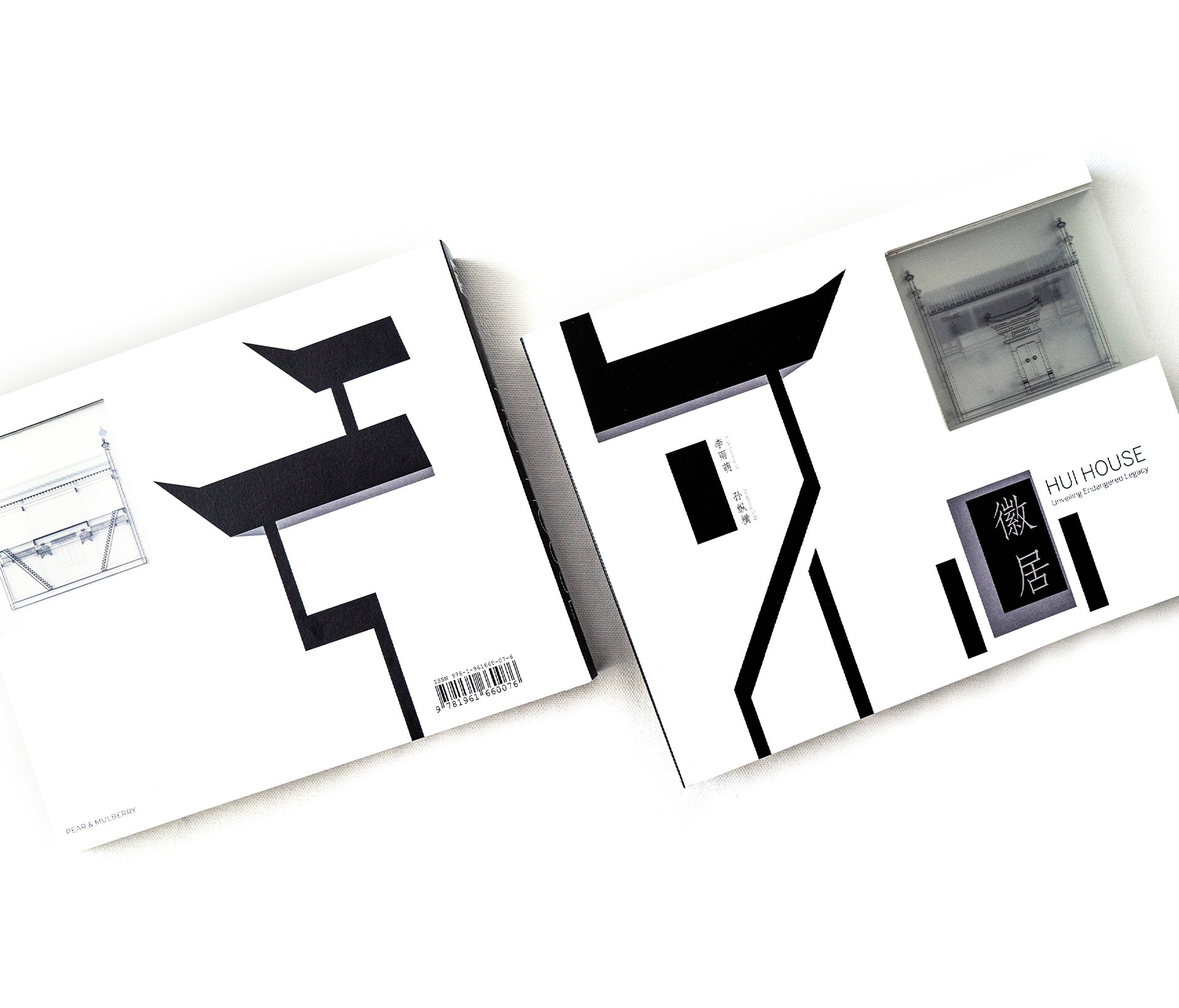
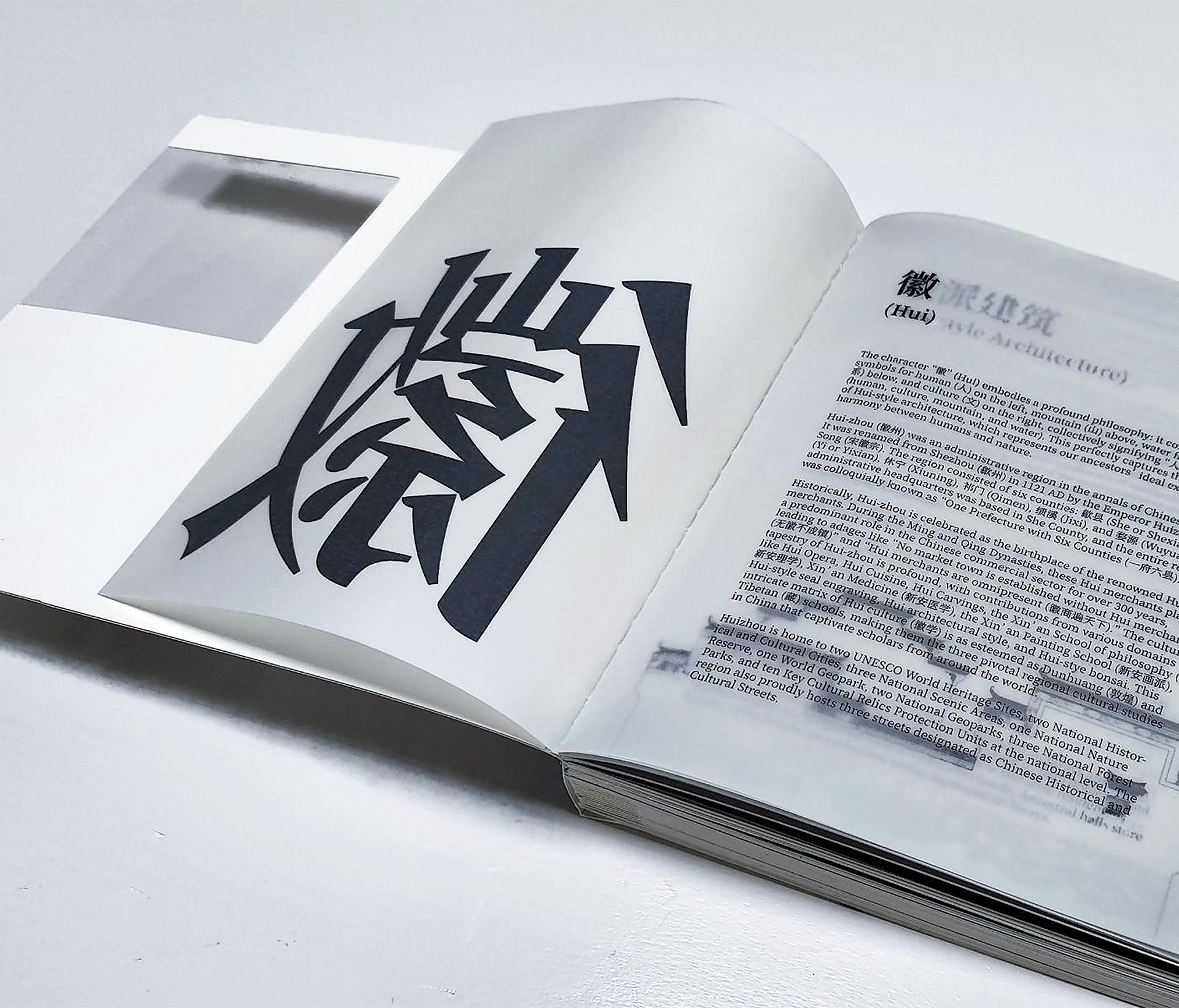
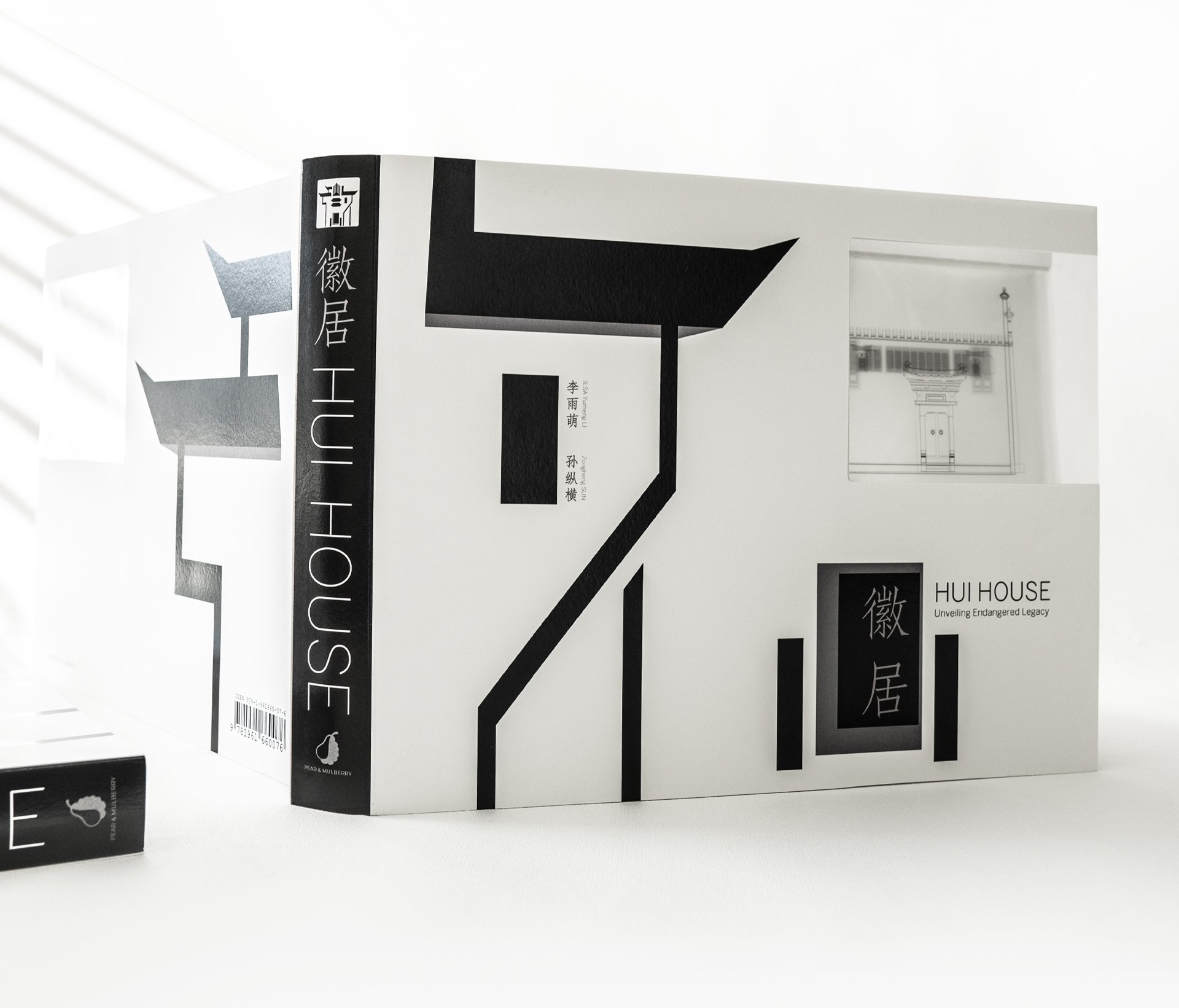
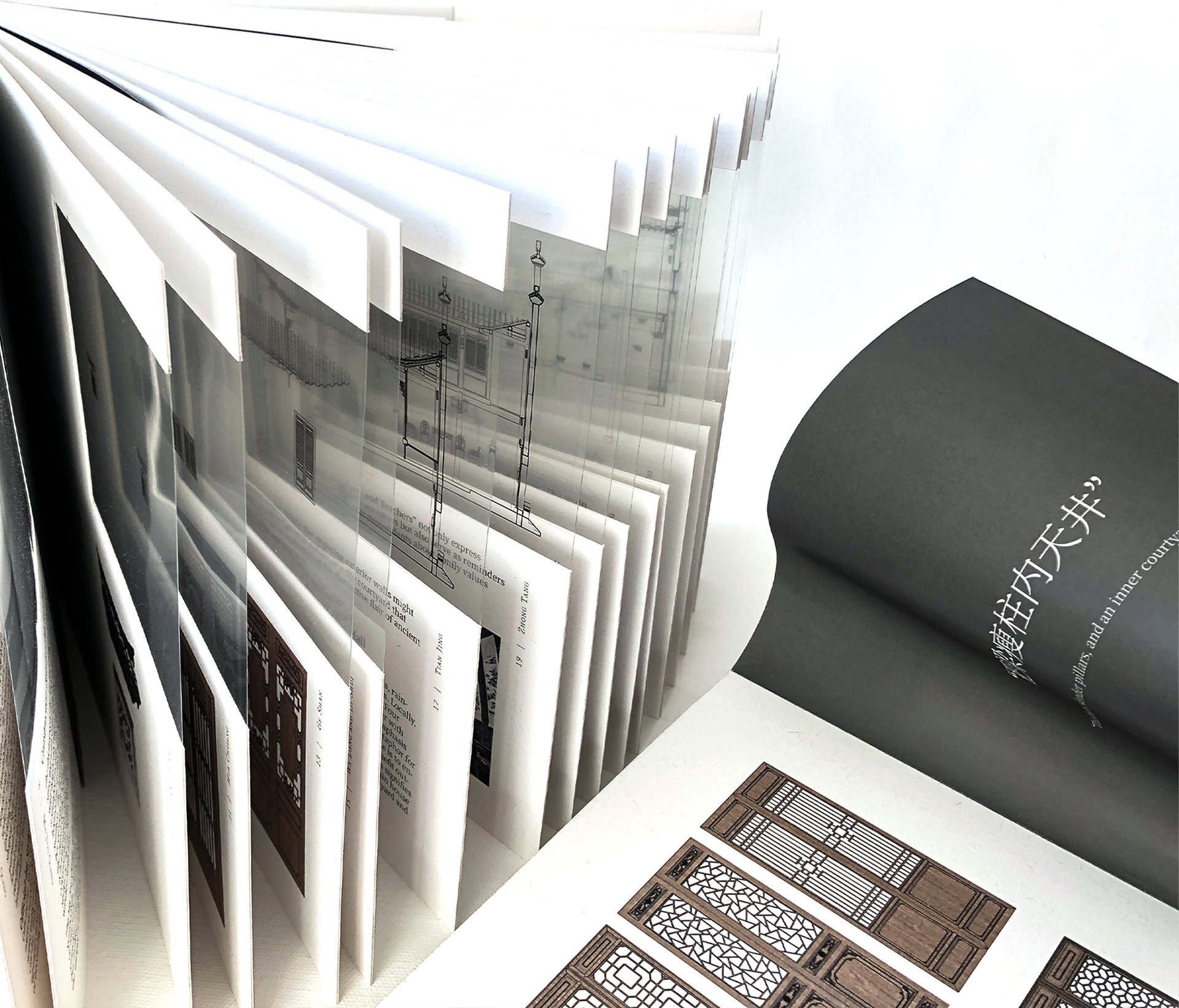
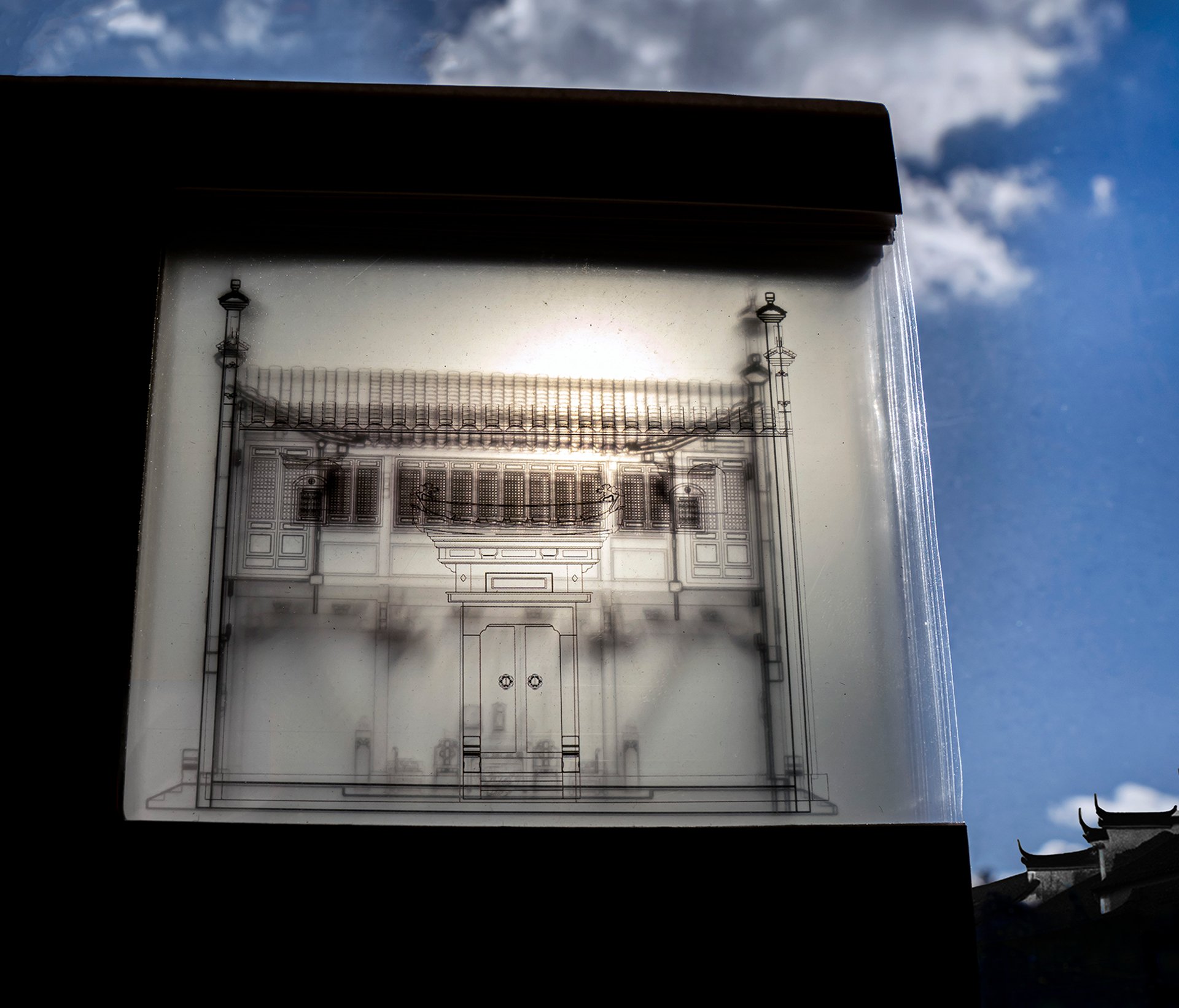
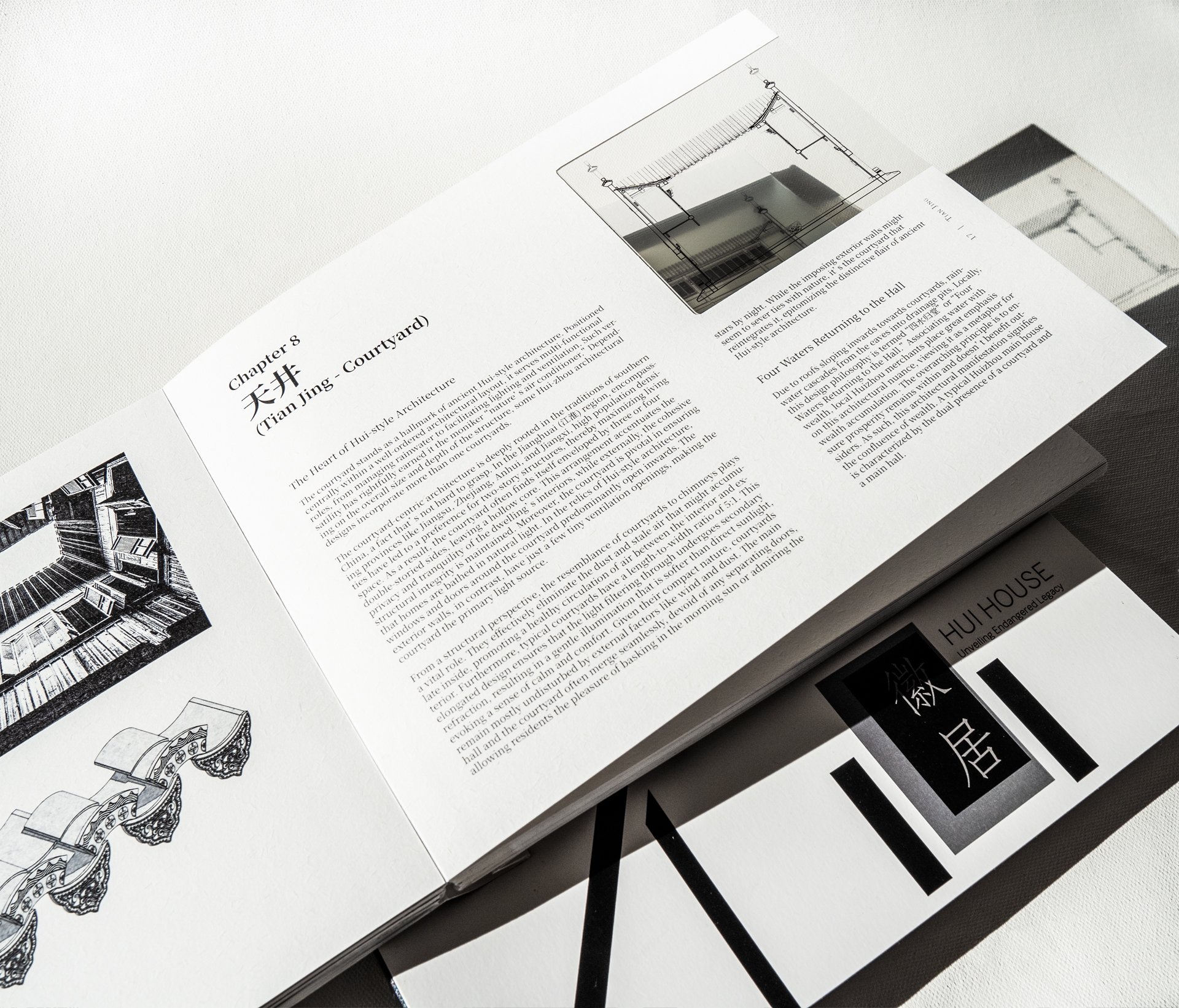
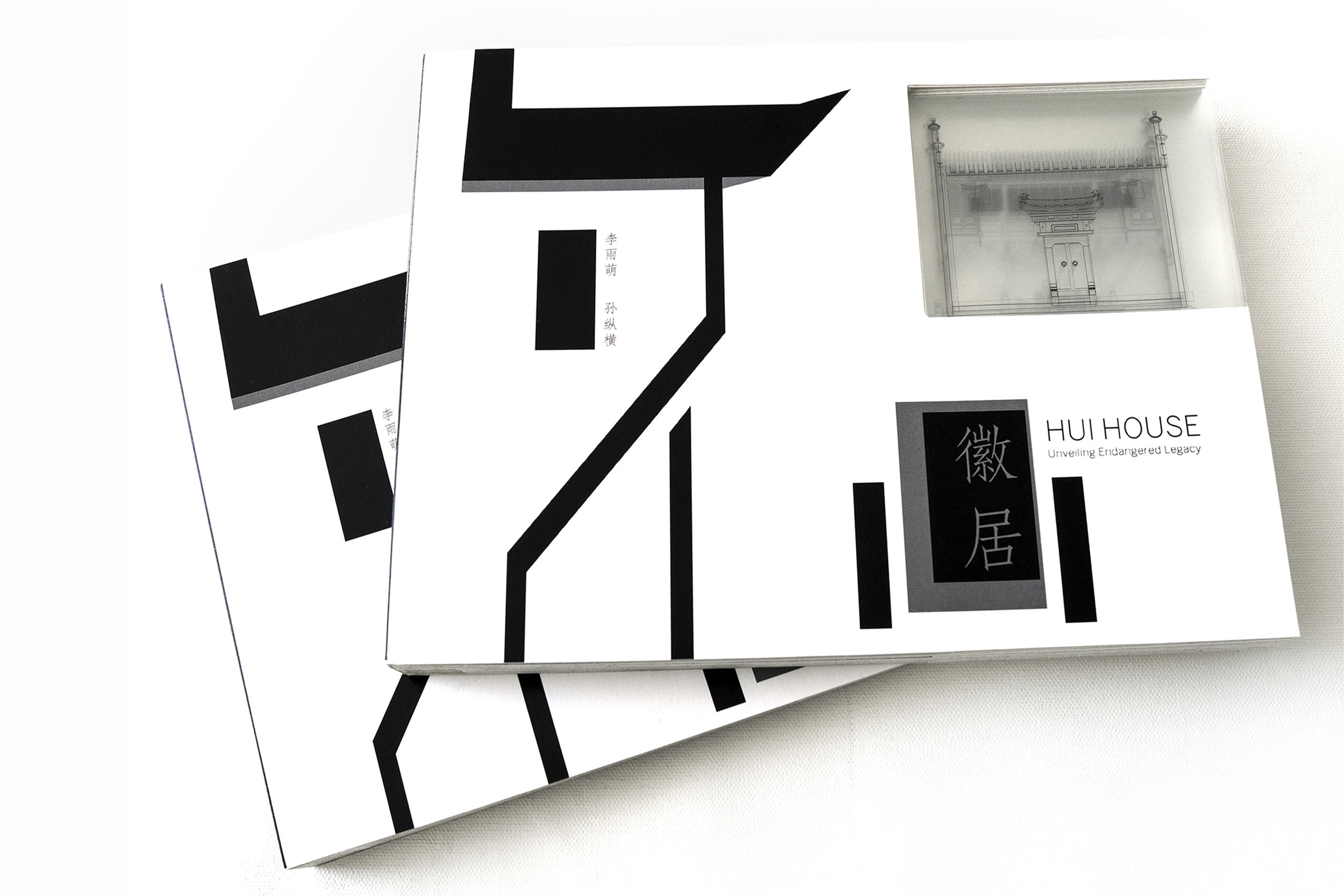


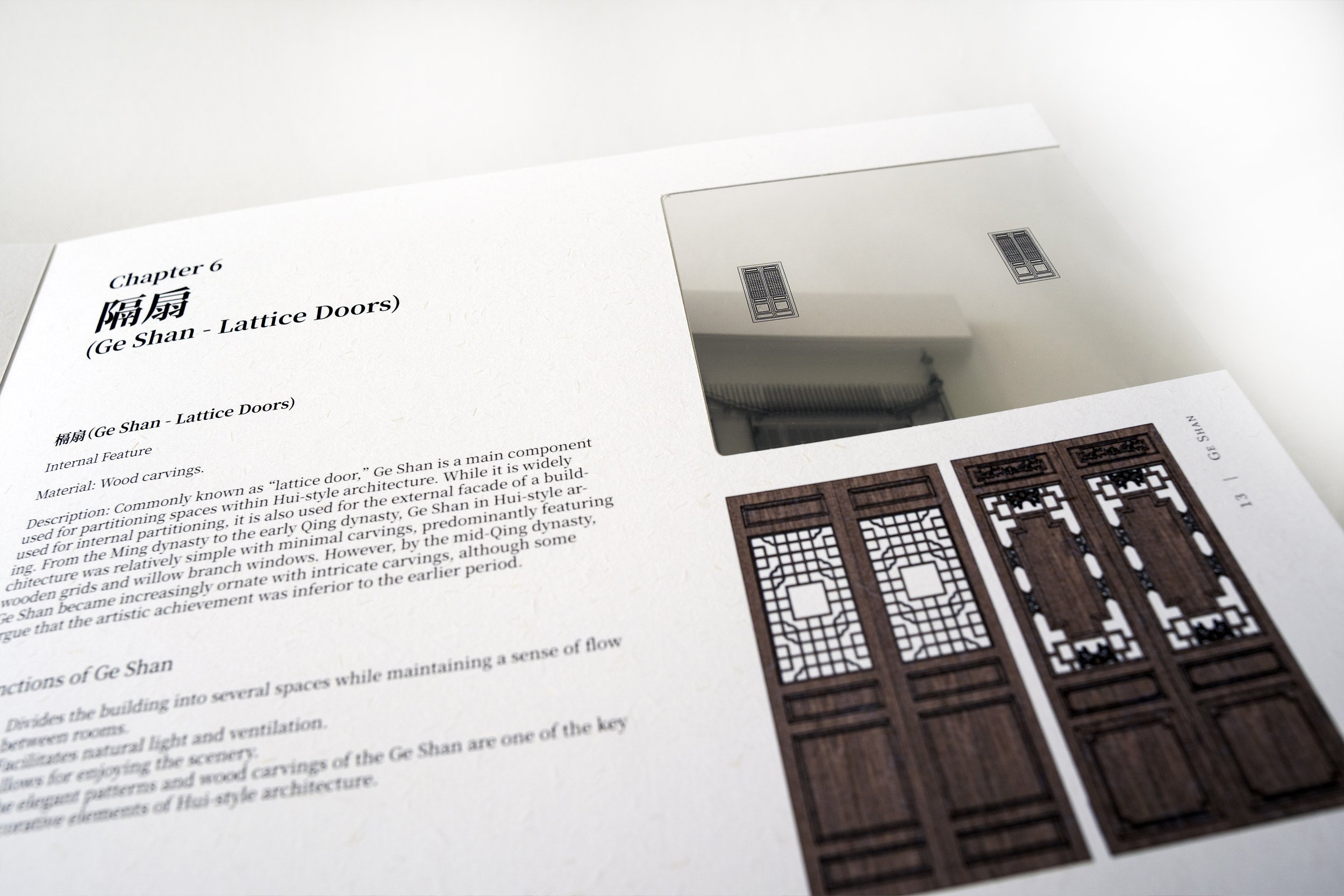
Exhibition & Award Recognition
IDA Gold in Print / Books, International Design Awards (IDA), 2023
LICC Official Selection (Final round in process) in Illustrate (graphic), London International Creative Competition (LICC), 2023
Bengbu Museum, National First( Top) -tier Museum 03/2024
Collected by the School of Arts, Anhui University of Finance & Economic 03/2024
A’ Design Award winner in Cultural Heritage and Culture Industry Design Award Category
Hui House has won awards at several prestigious design competitions for its educational purpose to researchers and students majoring in cultural studies, architecture, archeology, art history, Hui studies, digital heritage, digital humanities, and East Asian studies.




